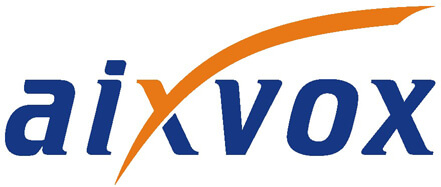Is Hybrid Working Really the Future of Work?
With hybrid work becoming more the norm than the exception, there are many gradations – Detlev Artelt from Aixvox offers insights into the new models and their related benefits and challenges.

© Dzmitry Dzemidovich| istockphoto.com
We are now in the third year of the pandemic. A time that required rethinking for all of us in many different areas of daily life. There were restrictions in the social environment and the most changes for many were probably at work.
The result of lockdowns and social distancing can still be seen today. Empty corridors in companies, deserted meeting rooms, and a significant increase in demand for hardware, software, and solutions for distributed communication and collaboration.
Not only new ways of thinking, but also new ways of communicating and working were consequences of the pandemic and its restrictions. Work inevitably no longer took place in offices and companies, but within the four walls at home.
In the meantime, many companies have made a virtue out of necessity. What started as an emergency solution gradually became a real concept of remote work and/or hybrid work.
What exactly does hybrid working mean?
Hybrid working means working not only at fixed workplaces and fixed offices, but also at other selected locations. This means that this concept clearly goes beyond the pure home offices and remote workplaces that have inevitably accompanied us in recent years.
Rather, it is a flexible model that is intended to meet all demands and leaves room for individual requirements and the respective life situation. This is precisely where the opportunity of this model lies. For only a few companies have started to order their employees back to the offices and company locations. Most have taken advantage of digitalization in recent years – not least because they had to.
In many cases, however, this compulsion has also led to the development of new workplace concepts and models.
What work models are there?
Because hybrid is not just hybrid. There are many gradations between the two extremes of “office first” on the one hand and “remote first” on the other. Between office-only and home-office-only, there are also partially flexible and fully flexible models, where employees are either flexible for a certain number of days or completely flexible in their choice of work location.
However, the hybrid does not only refer to the place of work but often also to the dimension of time. Until now, fixed working hours were the most used model, i.e. 9-to-5. In the new normal, more and more companies – which are not involved in production or otherwise bound to certain factory and opening hours – are tending towards a flexible model in which there are no longer fixed working hours.
Here, it is not the hours that the worker spends on his or her activities that count, but the result. This is also referred to as activity and result-oriented work.
Advantages and disadvantages?
Hybrid work has some advantages, but it can also have disadvantages for employers and employees.
The advantages of hybrid working models
- Work-life balance: is improved as time-consuming commuting is eliminated and appointments can be better coordinated.
- Recruiting: new employees and skilled workers no longer necessarily have to move to the city of the company’s headquarters.
- Image and market position: offering home office and hybrid working makes companies attractive and improves their position vis-à-vis competitors and rivals.
- Cost savings: minimizing office space can save on rental and maintenance costs.
Disadvantages:
- Higher coordination effort: managers must coordinate teams in different locations and possibly in different time zones.
- Leading distributed teams: these teams require a new style of leadership, characterized by trust and requiring the reorganization of processes.
How can hybrid working succeed?
The introduction and realization of a hybrid working model is not a book with seven seals, but it is also not something that can be done on the side. As an employer, it is important to decide on a model, to commit to it, and to actively live the model yourself.
The new workplaces and possibly the results-oriented work also result in a necessary change in leadership style. Team leaders therefore need to be trained in a situational working style and, like their staff, receive onboarding and be trained in the use of digital collaboration tools.
Whereas in the past, face-to-face meetings were held and a small chat was held at the coffee machine, now equivalents must be found in the virtual world: for example, video meetings, virtual team events, or even live streams and online events.
Therefore, in a hybrid work model, it is also important to create processes that ensure productive work and that no information gaps occur. All important information and decisions must be documented and made accessible.
This results in the need for appropriate IT equipment that is adapted to the different places of work and allows flexible working, communication, and collaboration. Companies may need to purchase new hardware and software and integrate it securely into the existing IT landscape. In addition, users need to be trained so that hybrid working functions smoothly and efficiently.
Even more than technology, hybrid working is a challenge on the human and cultural level.
Trust is therefore the basic prerequisite. Because unlike location-based work, where you might see the employee during “regular” working hours and be able to check the results, this is not the case with the “new” work. Many managers therefore initially have the feeling of losing control. But this is not a bad thing if it is replaced by trust in the employees – trust in their autonomy and personal responsibility.
Besides trusting in the loyalty of colleagues, it is also important to promote the autonomy and motivation of the individual. Giving your employees independent tasks and responsibility is an important step towards a satisfied team.
New trends, technologies, and skills are also the topic of EOA29. The German-language livestream on the topic of new ways of working takes place every Wednesday at 12.29 p.m. for 29 minutes. www.aixvox.com/eoa29.
Detlev Artelt is CEO of aixvox GmbH, a manufacturer-independent consulting company in Aachen. He heads the Competence Group Unified Communications at the eco Association and the CG Business Communications at EuroCloud and is speaker and presenter at many international congresses and fairs. He is the publisher and author of the “voice compass” book series, the standard book for business communication.
Please note: The opinions expressed in Industry Insights published by dotmagazine are the author’s own and do not reflect the view of the publisher, eco – Association of the Internet Industry.





